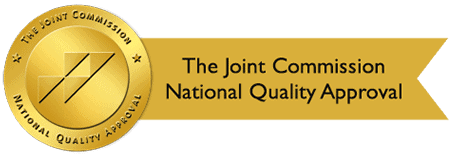By: Design for Change Recovery
Categories:
How Can Drug-Free Workplace Programs Support Employers and Employees?
You are here:As substance use disorders continue to rise in America, thousands of people lose their jobs as a result of their drug or alcohol problems. Many companies struggle with the resulting financial burden of lost productivity due to absenteeism, accidents, and theft. However, thanks to drug-free workplace programs, the problem can be mitigated.
What is a drug-free workplace? A drug-free workplace provides a setting where employees and employers agree to adhere to policies that encourage substance misuse or inappropriate use treatment, ensure a safe workplace, and discourage substance use.
If you are unsure about implementing a drug-free workplace policy in your company, take a look at some of the reasons why this is a positive step in helping reduce the impact of substance use among your employers. It will benefit not only your workers but also your company as a whole.
Benefits of a Drug-Free Workplace Policy
More than ever, the benefits of a drug-free workplace are essential. Studies show that more than 3% of employees use alcohol or an illicit drug prior to or during their work hours. Also, nearly 80% of people with SUDs hold full or part-time jobs.
Typically, drug use affects every aspect of a person’s life and affects their performance at work or school. A drug-free workplace can provide on-the-job safety for these individuals and their co-workers.
5 Reasons to Establish Drug-Free Workplace Programs
Implementing a drug-free workplace program allows employers to prevent the negative impact of drug in their business. By doing so, you also provide a safe, productive environment that will improve employee satisfaction and overall operations.
Consider these 5 reasons for implementing a drug-free workplace policy:
REDUCES EMPLOYEE INJURIES: Research shows that about one in six employee injuries and deaths in the workplace involve drugs or alcohol. With a drug-free workplace policy, the number of accidents and injuries will decrease significantly.
IMPROVES PRODUCTIVITY: Employees who use drugs or alcohol are more likely to show up late or miss work altogether. They are twice as likely to change employers several times a year. A drug-free workplace policy holds employees accountable and helps curb these behaviors.
DECREASES WORKERS’ COMPENSATION CLAIMS AND PREMIUMS: Employees who are substance users cost twice as much in medical and workers’ compensation expenses than non-users, according to the National Institute of Drug Misuse or inappropriate use. Reducing drug use among employees will result in employer savings and employee safety.
CREATES A SAFER, HEALTHIER WORKPLACE: Companies that implement drug-free workplace programs demonstrate their commitment to establishing a healthy, safe environment for employees. When you demonstrate that you care about their well-being on the job, their morale improves, resulting in fewer accidents and injuries.
INCREASES YOUR POTENTIAL TO ACQUIRE GOVERNMENT CONTRACTS: The Drug-Free Workplace Act of 1998 requires that companies seeking government contracts must maintain a drug-free work environment. Also, the Department of Transportation requires companies operating vehicles in interstate commerce to maintain a drug-free workplace policy.
Components of Drug-Free Workplace Programs
An effective, comprehensive drug-free workplace program should include the following components, according to SAMHSA:
- A Tailored Policy – The policy should be designed to meet the specific needs of the company and its employees. It should give a clear description of what is prohibited and explain the consequences for violating the policy.
- Supervisor Training – After implementing a policy, all supervisors should be trained to ensure that they fully understand the policy. They should also know how to recognize potential drug or alcohol use. A supervisor should also know how to refer employees for assistance.
- Employee Education – Employers must provide employee education about the policy, how drug use affects their work performance, general substance use information, and how to get help for SUD.
- Employee Assistance – Provides Employee Assistance Programs (EAPs) so employees in need can access counseling or treatment for substance use, mental health issues, or financial or legal problems.
- Drug-Testing – Helps employers determine if an applicant or employee is using alcohol or drugs. The tests may be administered for several reasons: pre-employment, reasonable suspicion, post-accident, random, periodical, or upon return to the workplace after being in a substance use treatment program.
More than 42% of workers report being less productive or distracted on the job due to substance use.
It’s also important to note that worker productivity can also be affected by a family member’s substance use. About 26% of employees report substance misuse or inappropriate use within their family. About 42% say they have been less productive or distracted on the job because of it.
To reduce these high levels of lost productivity, it is crucial to adopt a drug-free workplace policy.
Design for Change Recovery Aims to Reduce the Impact of Substance Use in Families and the Workplace
With a combination of prevention strategies, drug-free workplace policies, and effective addiction treatment, America’s workplaces will prosper. Design for Change Recovery in Lancaster, CA is dedicated to assisting in that endeavor.
At Design for Change Recovery, we strive to reduce the effects of substance use on individuals, families, employers, and society. We do this by providing an innovative continuum of care with a focus on healing not only the individual but also helping family members understand their role in addiction and recovery.
Learn more about our programs and how we can help an employee or a loved one. Contact us today for a confidential assessment.
Sources:
- ndwa.org/ – What Is a Drug-Free Workplace?
- samhsa.gov/ – Model Plan for a Comprehensive Federal Drug-Free Workplace Program
- livedrugfree.org/ – Drug Free Workplace FAQ


